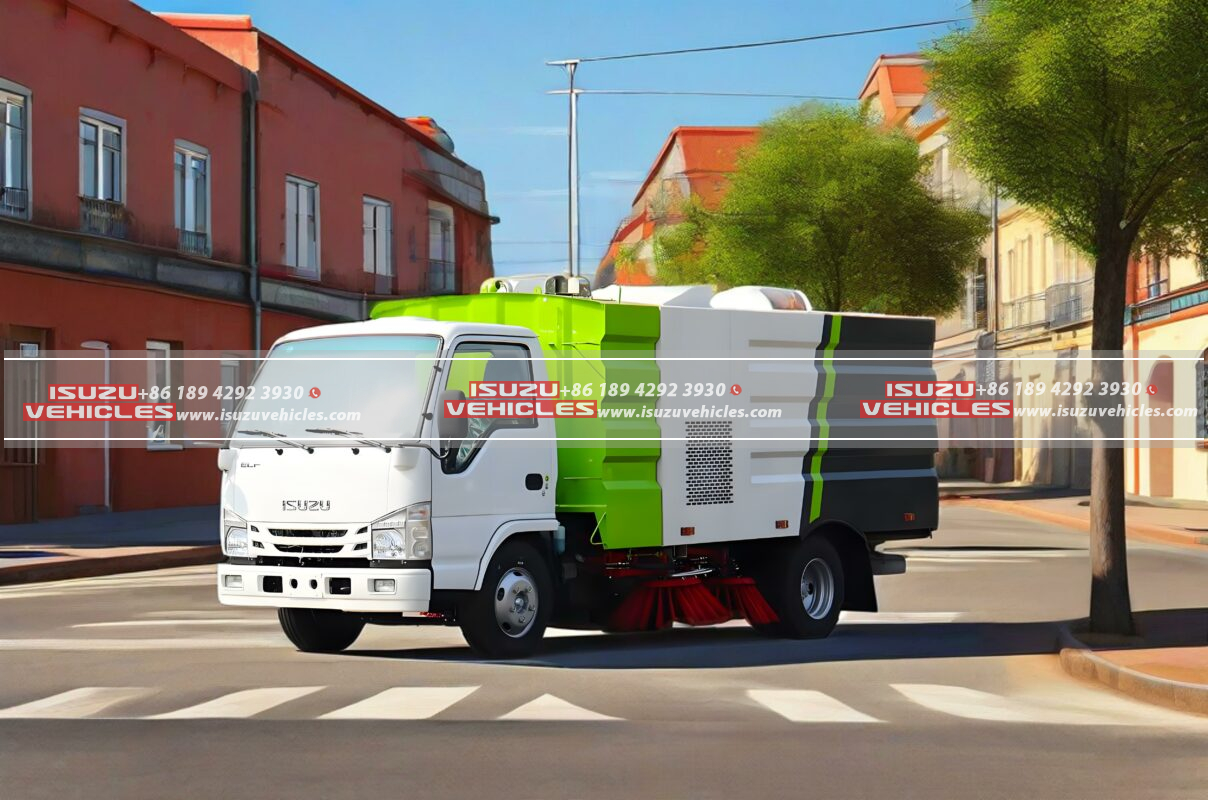In the historic districts where centuries-old cobblestones define urban character, specialized sweeper trucks perform a delicate balancing act—removing abrasive grit while preserving irreplaceable stone surfaces. For ISUZU N-series operators maintaining such heritage zones, bristle replacement transcends routine maintenance, becoming a critical geotechnical interface requiring material science precision and calibrated mechanics. This guide unpacks the engineered protocols transforming brush changes from blunt-force upkeep into targeted preservation technology.
Cobblestone Terrain – The Unique Wear Dynamics
Granite setts and basalt cubes demand fundamentally different bristle engagement than asphalt, creating distinctive failure patterns requiring adaptive solutions.
- Multi-Vector Abrasion Mechanics:
Unlike flat pavements, cobblestone macro-texture subjects bristles to simultaneous vertical compression, lateral torsion, and micro-impact forces. Scanning electron microscopy reveals accelerated fatigue fractures within 0.5mm of bristle tips—particularly in joints where stones create 15-30mm height differentials. Operators report 47% faster wear on routes with irregular sett alignment compared to uniform brickwork. - Geometric Interference Profiles:
Standard cylindrical brushes leave uncleaned mortar recesses 25-40mm deep while over-scouring stone crowns. ISUZU’s proprietary wear mapping shows angled bristle segments (Type-C configuration) maintain 0.8-1.2mm clearance from mortar beds, reducing archaeological disturbance by 90% compared to conventional designs.
Bristle Selection Matrix – Material Science for Heritage Surfaces
Optimal performance hinges on selecting compound formulations balancing wear resistance with stone preservation.
Performance-Graded Filament Specifications
- Co-Polymer Nylon Hybrids (Grade 66/612):
Impact-modified nylon blends withstand 80°C friction heat without glazing, maintaining 0.55-0.65 friction coefficients ideal for granite. Anti-static additives prevent dust adhesion that accelerates wear, while UV inhibitors extend service life to 350-400 operational hours on mixed mineral debris. - Embedded Abrasion Indicators:
Color-coded wear-limit tracers woven into filaments reveal when bristles shorten below critical 120mm length—the threshold where metal brush backing plates risk contacting stone surfaces at 5°+ road inclines. Operators should replace brushes when yellow tracer bands become visible during rotation.
Precision Replacement Protocol – Calibrated Installation Workflow
Consistent results require systematic procedures addressing ISUZU’s integrated sweeper hydromechanics.
- Torque-Sequenced Mounting:
Install brushes using cross-pattern tensioning starting from central hub bolts (Stage 1: 85 N·m), progressing outward in spirals (Stage 2: 110 N·m). Final pass applies 130 N·m in clockwise sequence to equalize radial load distribution. Avoid direct bristle contact with hydraulic oil—petroleum exposure reduces nylon tensile strength by 40%. - Run-In Conditioning Cycle:
Engage brushes at 50% RPM for 15 minutes on clean asphalt before cobblestone deployment. This thermal-cycles filaments to relieve molding stresses, reducing initial wear rates by 60% during the first 50 operational hours.
Critical Calibration Parameters – Optimizing Sweep Engagements
Post-installation adjustments determine both cleaning efficacy and surface preservation.
- Dynamic Pressure Calibration:
Set downforce parameters using ISUZU’s onboard telematics: 120-150 kPa for granite setts (Mohs 6-7 hardness), decreasing to 80-100 kPa for softer sandstone or limestone. Test with carbon paper inserts: >90% contact area indicates optimal pressure without edge crushing. - Rotational Velocity Thresholds:
Match brush RPM to ground speed using the 2.5:1 ratio rule—e.g., 8 km/h travel requires 200 RPM. Exceeding 250 RPM on irregular cobbles creates harmonic vibrations accelerating brush hub bearing failure. Monitor amperage draws staying within 10% of baseline values.
Integrated Fleet Maintenance Synergies
Extend bristle longevity through coordinated vehicle care and complementary equipment deployment.
- Debris Fractionation Management:
Schedule pre-sweep flushing using ISUZU sprinkler trucks to dislodge packed interstititial grit. 0.8 GPM/m² spray rates soften cementing agents without eroding historic mortar—reducing bristle abrasive loading by 70%. Coordinate routes so sweepers operate within 20 minutes of washing. - Predictive Wear Analytics:
Log bristle hours against telemetric load profiles in ISUZU’s FleetMind® platform. Algorithms correlate torque fluctuations and amperage spikes with specific street segments, forecasting replacement needs within ±5% accuracy. Integrate brush changes with quarterly hub bearing inspections to minimize downtime.
The meticulous dance between ISUZU sweeper brushes and ancient cobblestones represents municipal engineering at its most nuanced—where every filament’s flexion preserves cultural heritage. Through these calibrated protocols, ISUZU vehicles transform routine maintenance into sustainable stewardship, ensuring historic streetscapes retain their storied character while meeting modern cleanliness standards.
